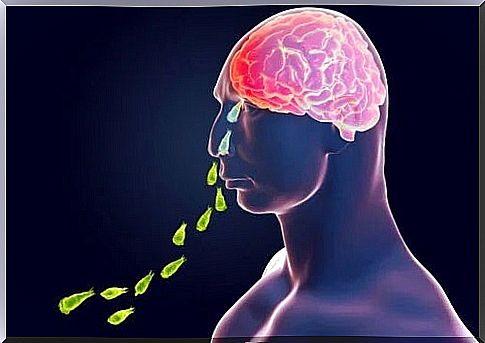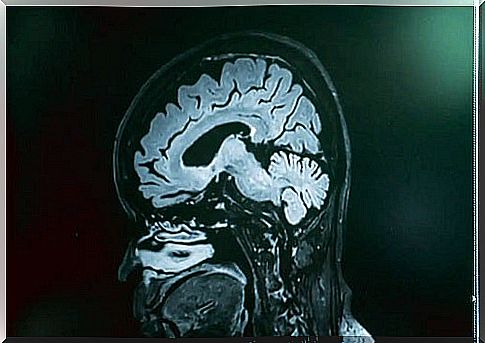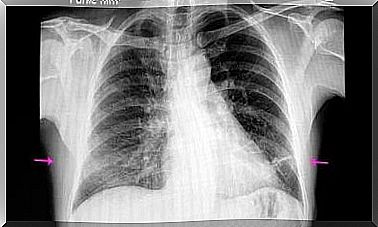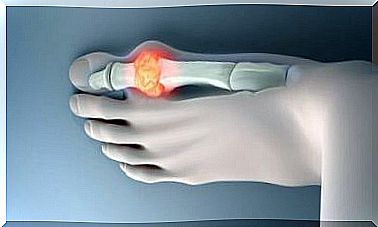Naegleria Fowleri Infection: Amoeba Eating Brain

Infection with Naegleria fowleri (an amiboflagellate belonging to the Percolozoa cluster) triggers naeglerosis , also known as primary amoebic meningoencephalitis (PAM). This condition is extremely rare and fatal, with a mortality rate of 98.5%.
Fortunately, this infection is very rare. Only 34 cases were reported in the United States from 2008 to 2017. Globally, in the last 60 years, approximately 450 cases of naeglerosis have been detected.
N. fowleri lives in freshwater, soil or the host’s central nervous system (CNS). If you want to learn more about primary amoebic meningoencephalitis, including symptoms and treatments, read on!
What is Naegleria fowleri infection?
Naegleria fowleri, known as the brain-eating amoeba, is a species of the genus Naegleria , belonging to the Percolozoa branch . It is not a true amoeba at the phylogenetic level, because it goes through a flagellated life phase.
N. fowleri love freshwater environments, especially dirty and contaminated ones. According to the Statpearls medical portal, this organism can withstand temperatures of up to 45 degrees Celsius, and its life cycle is divided into three distinct phases:
- Cyst: This is the resistance structure of the microorganism. When free forms are subjected to stressful environments, they turn into a cyst with a diameter of about 9 micrometers. Factors that promote the appearance of cysts are lack of food, drying of the environment and temperatures below 10 degrees Celsius.
- Trophozoite: This is the stage where the amoeba divides, feeds on bacteria and, unfortunately, causes disease in humans. Trophozoites measure 10-35 micrometers and move using pseudopods, cytoplasmic extensions that allow basic locomotion.
- Flagel: This stage distinguishes Naegleria from many other non-bacterial microorganisms. The flagellate form, as its name suggests, has 2 flagella and occurs when trophozoites are exposed to ionic changes in the aqueous medium.
You should know that both flagella and cyst can cause infections in humans, although trophozoite is the most infectious form. When this amoeboflagellate enters the host’s nasal cavity, the cyst and flagellum turn into an infectious trophozoite.

Why does Naegleria Fowleri infection occur?
The Centers for Disease Control and Prevention (CDC) shows us the infectious cycle of this pathogen. N. fowleri enters the human body through the nasal passages. Once nasal inoculation has occurred, the pathogen invades the respiratory epithelium and olfactory mucosa.
From here, it migrates through the cribrose lamina (a section of the ethmoid bone) into the central nervous system (CNS), more precisely into the brain, through the olfactory nerves.
N. fowleri causes a response from the immune system. Its virulence depends on the Nfa1 protein (which binds oxygen molecules), the production of nitrogen oxide and the presence of pore-forming proteins.
Because there are no bacteria to feed on inside the human being, N. fowleri attacks neurons and astrocytes of the central nervous system. To some extent, the name amoeba that eats the brain defines the pathogenic mechanism.
Risk factors
The Mayo Clinic and other sources indicate the risk factors that lead to the development of Naegleria infection. In any case, you must remember that this is a very rare disease:
- Freshwater Swimming: Most people become infected after swimming in stagnant water.
- Swimming in very hot water: This pathogen does not respond well to cold. Therefore, it is more common in tropical climates.
- Age: Due to poor habits and hygiene, young children are more prone to N. fowleri infection .
Amoeba does not survive in saline environments and is sensitive to chlorine. It is impossible to get infected by swimming in the sea or in a properly treated public pool.
Symptoms of Naegleria fowleri infection
Clinical signs of infection appear within 2 to 8 days, although some patients begin to experience symptoms 24 hours after infection. Even so, we must emphasize that there is no standardized reaction.
The most common symptoms are severe headache, photophobia, confusion, seizures and coma. Patients also have an abnormal heart rhythm and necrosis of the myocardium, the muscle tissue of the heart.
Increased intracranial tension also occurs. Cerebrospinal fluid pressure rises to 600 in patients with naeglerosis. As mentioned above, the prognosis is very poor and most cases end with the death of the patient.
Diagnostic tests
As indicated in the MSD manuals, this disease can be confirmed by lumbar puncture (and subsequent analysis of cerebrospinal fluid), as well as by brain biopsy. Doctors perform these tests on people with symptoms of naeglerosis who have been in contact with untreated fresh water in recent days.
Imaging tests (computed tomography and magnetic resonance imaging) do not detect the disease, but may rule out other possible health problems. Doctors perform cultures or genetic tests to look for the amoeba genome.

Possible treatments for Naegleria infection
Treatment options for Naegleria Fowleri infection are very limited due to the lack of surviving patients and in vitro studies.
The following are medicines that are currently in use or in the testing period but do not guarantee recovery:
- Amphotericin B: This is an antibiotic and antifungal extracted from Streptomyces nodosus, a filamentous bacterium. It is the most common medication historically for treating naeglerosis.
- Miltefosine: This is an antiprotozoal agent that has been developed to treat breast cancer. This treatment saved the lives of 3 patients: 2 in 2013 and 1 in 2016.
- Fluconazole: This is an adjunctive drug in the prevention of superficial and systemic fungal infections. It has a good rate of penetration into the central nervous system.
- Azithromycin: This is a broad spectrum antibiotic from the macrolide group. It is in the experimental stage.
Unfortunately, in the last 10 years there have been only three survivors in the United States. This makes it very difficult to test the effectiveness of a treatment. Of the nearly 150 people infected in this country in the last 60 years, only 4 have survived to tell their story.
A rare problem
These latest data may seem alarming, but nothing can be further from the truth. Specialists have detected a total of 148 cases of naeglerosis in the United States in the last 60 years. The disease is so rare that it is not worth worrying about.
It is a good idea to avoid water sports in stagnant waters, due to possible pathogens present in them.









